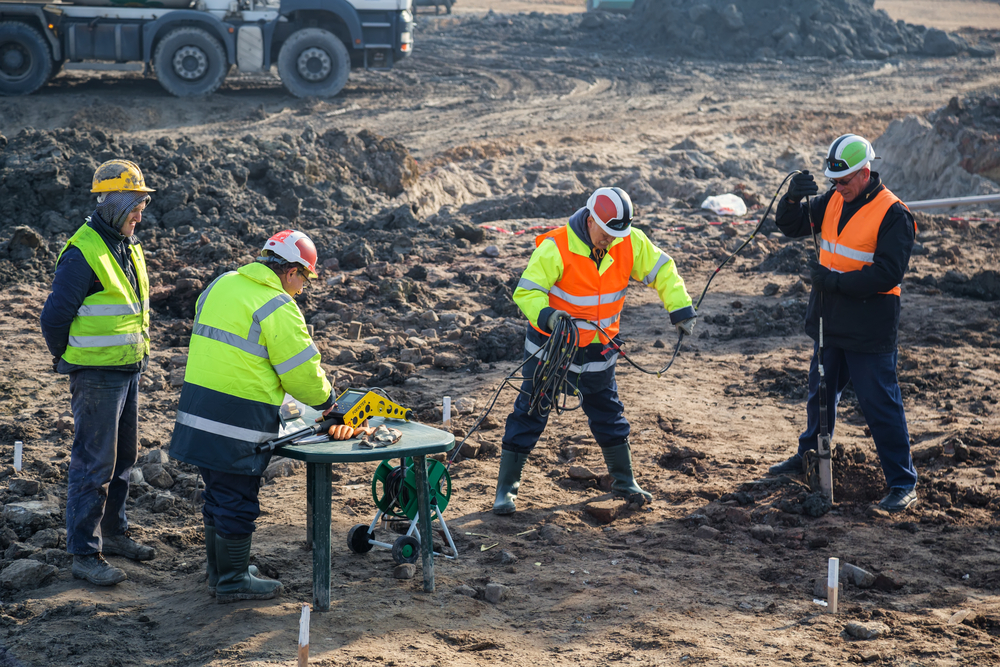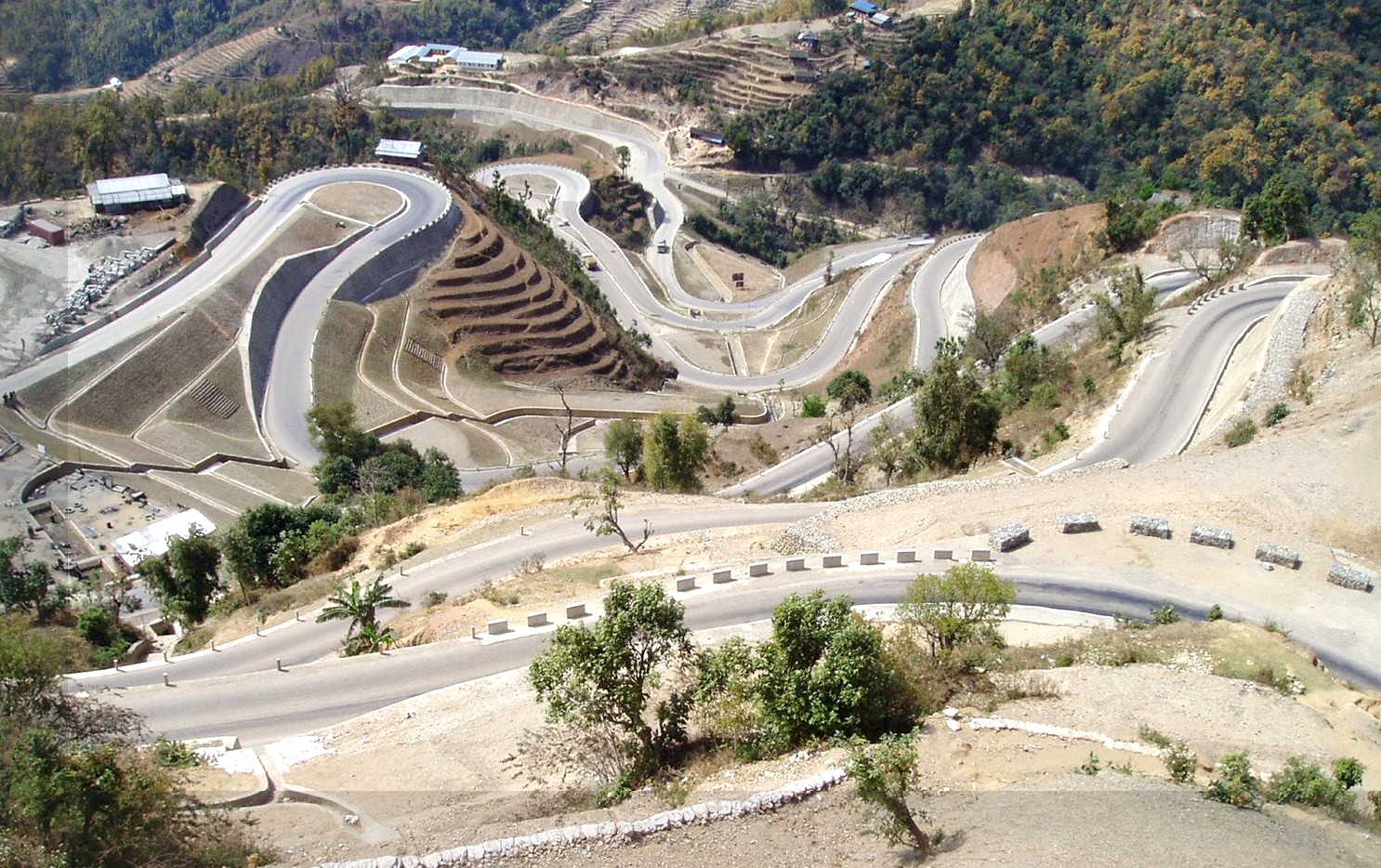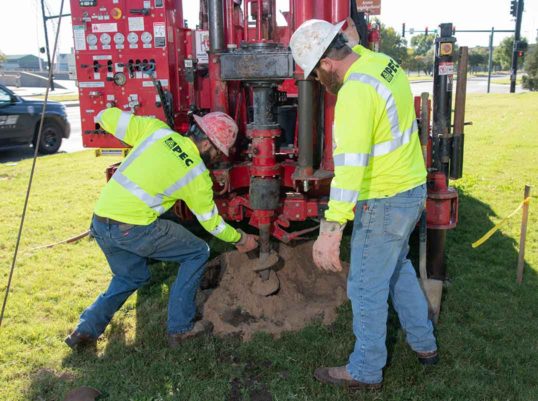The Advantages of Partnering with a Leading Consulting Engineer for Your Company Demands
The Advantages of Partnering with a Leading Consulting Engineer for Your Company Demands
Blog Article
Recognizing the Vital Role of the Geotechnical Sector in Modern Building Projects and Facilities Advancement
The geotechnical industry is a foundation of contemporary construction and facilities growth, offering vital insights right into dirt actions that directly affect job end results. Via sophisticated soil assessments and innovative engineering solutions, geotechnical specialists not only guarantee structural stability however also address sustainability concerns amid evolving ecological standards. As facilities demands expand and new difficulties arise, the importance of this area comes to be significantly apparent. What implications might these growths have for future tasks and the general safety and security of our constructed setting?
Significance of Soil Evaluation
Soil analysis plays a critical role in the geotechnical sector, acting as the foundation for notified decision-making in construction projects. Accurate soil evaluation is necessary for identifying the suitability of a website for various kinds of structures, consisting of residential homes, commercial structures, and bridges. By assessing dirt structure, moisture, strength, and density material, designers can anticipate potential challenges and reduce threats related to ground instability, erosion, and settlement.
The evaluation process normally entails a collection of tests and observations that give important info about the subsurface problems. This data educates the style and building processes, ensuring that structures are improved strong ground with appropriate support. In addition, comprehending the dirt account makes it possible for designers to pick proper building and construction approaches and materials, enhancing source usage and decreasing expenses.
In addition to ensuring architectural stability, soil analysis adds to ecological sustainability. By identifying potential contamination or unfavorable impacts on surrounding ecological communities, engineers can implement approaches to secure these natural deposits. Generally, thorough soil analysis is indispensable in the geotechnical field, underpinning the safety, performance, and environmental responsibility of construction tasks.
Trick Geotechnical Techniques
A variety of vital geotechnical techniques are used to improve the stability and assess and efficiency of construction sites. One fundamental approach is dirt tasting and screening, which enables designers to determine the physical and chemical properties of the ground. This details is essential for making notified decisions pertaining to structure design and building and construction techniques.
One more vital strategy is website characterization, which includes the thorough analysis of dirt and rock conditions with approaches such as borehole boring and in-situ testing. Methods like Criterion Penetration Tests (SPT) and Cone Infiltration Examinations (CPT) offer useful data on soil stamina and stratigraphy.
Ground renovation methods, such as soil stablizing and grouting, are also important in improving the load-bearing capacity of weak dirts. These techniques can minimize settlement and improve overall site conditions.
In addition, slope stability evaluation is critical for determining prospective landslide risks and ensuring the safety and security of excavations. This analysis commonly utilizes mathematical modeling and limitation equilibrium techniques to forecast dirt habits under numerous problems.
Integrating these geotechnical methods into construction preparation not only maximizes project results however also ensures the long-term sustainability of infrastructure development.
Influence On Building Safety And Security

Moreover, reliable geotechnical engineering entails implementing reduction approaches for determined threats. This might include soil stabilization strategies, retaining frameworks, or drain learn the facts here now systems to alleviate hydrostatic pressure. By resolving these factors, building and construction teams can lower the chance of crashes and enhance employee safety and security.
Additionally, continual tracking of website conditions is important throughout construction. Geotechnical instruments can give real-time information relating to ground activity and security, enabling for prompt interventions when needed.
Basically, the geotechnical market plays a pivotal function in securing building jobs. By focusing on ground integrity and employing extensive analysis methods, the geotechnical field not only shields the labor force but likewise adds to the longevity and integrity of constructed infrastructure.
Sustainability in Geotechnical Practices

Additionally, geotechnical engineers are currently utilizing innovative modern technologies, such as geosynthetics, which boost dirt security while lowering the volume of material needed. This not only preserves sources but also brings about much less waste generation (tailings engineer). The assimilation of lasting design principles into geotechnical design encourages the use of eco-friendly power sources in building procedures, additionally lowering carbon emissions
By performing these analyses, geotechnical professionals can create strategies that alleviate negative effects, guaranteeing conformity with ecological laws. On the whole, the emphasis on sustainability within geotechnical practices not just adds to the long life and resilience of facilities yet additionally advertises an accountable approach to land and source management.
Future Trends in Geotechnical Engineering
Advancement is driving the future of geotechnical design, as emerging innovations and techniques improve the sector. The integration of advanced data analytics and fabricated knowledge about his is readied to change website investigation and risk evaluation, enabling designers to make even more educated decisions based upon real-time information. Moreover, making use of geosynthetic products is getting grip, supplying sustainable services that improve soil stability and minimize environmental influence.
One more significant trend is the adoption of automated and robotic systems for surveillance and building processes. These innovations not only improve accuracy yet likewise boost security by minimizing human participation in dangerous atmospheres. Furthermore, the implementation of Structure Information Modeling (BIM) in geotechnical style promotes improved cooperation among stakeholders, enhancing project delivery and minimizing expenses.
As climate change presents new difficulties, the sector is progressively concentrating on durability and flexibility in layout techniques, making sure framework can withstand severe weather condition events. The ongoing fad toward sustainability will certainly drive technology in environmentally friendly products and methods, straightening geotechnical design with wider environmental goals. Collectively, these fads will form a more reliable, sustainable, and durable geotechnical landscape for future tasks.
Conclusion

The geotechnical Recommended Reading industry is a keystone of modern-day building and construction and framework growth, offering critical understandings right into dirt actions that directly affect job outcomes. geotechnical engineers.Soil assessment plays a critical duty in the geotechnical sector, offering as the structure for informed decision-making in building and construction jobs. In general, comprehensive dirt evaluation is important in the geotechnical field, underpinning the security, performance, and environmental obligation of construction projects
Construction safety and security is considerably influenced by geotechnical techniques, as the security and integrity of the ground straight impact the total security of a building and construction site.In final thought, the geotechnical sector is vital in modern building and facilities advancement, giving important evaluations that guarantee structural honesty and safety and security.
Report this page